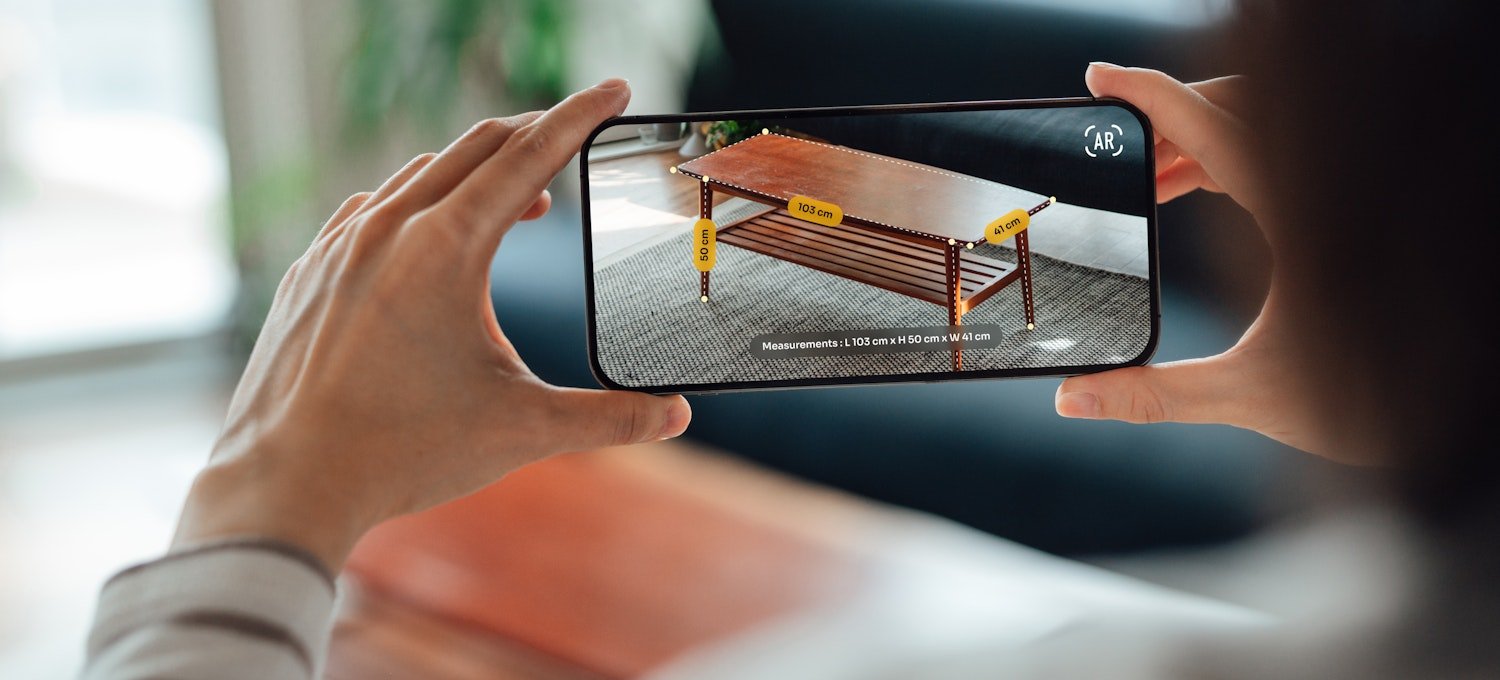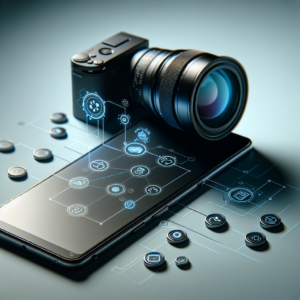Have you ever wondered how technology could transform the learning experience? With Augmented Reality (AR) becoming more mainstream, I find myself fascinated by its potential impact on education. It’s not just a futuristic concept anymore; it’s here, shaping the way I learn and interact with educational content.
What is Augmented Reality?
To put it simply, Augmented Reality blends the physical world with digital elements. Unlike Virtual Reality, which immerses me entirely in a computerized environment, AR enhances the real world by overlaying digital information onto it. This technology can be experienced through smartphones, tablets, or special glasses that allow me to see 3D models and animations superimposed on my real-world view.
How AR Works
AR operates through various technologies, including computer vision, simultaneous localization and mapping (SLAM), depth tracking, and more. When I point my device’s camera at an object or location, the AR software recognizes it and presents contextual information, animations, or simulations.
- Computer Vision: This technology enables my device to interpret images and understand the environment around me.
- SLAM: This method maps the surrounding area while tracking the device’s position, allowing for a seamless integration of digital content into my immediate surroundings.
- Depth Tracking: It measures the distance to surrounding objects so that the digital overlays can be properly placed and scaled, making it feel more realistic.
The Current Landscape of Education
Before we dive into the impact of AR, it’s worth noting the current state of education. Traditional teaching methods have relied heavily on textbooks, lectures, and rote memorization. While these approaches have their merits, they often fall short in actively engaging students and accommodating different learning styles.
Challenges in Traditional Education
Like many learners, I sometimes find that traditional education can be a bit monotonous. Here are a few challenges that I often encounter:
- Limited Interactivity: Traditional classrooms frequently lack the interactive components that could make lessons more engaging.
- One-Size-Fits-All Approach: Each student learns differently, and the standard curriculum can leave those of us who thrive under different methodologies feeling left out.
- Resource Constraints: Not every school has access to the latest resources or technologies.
These challenges highlight the need for innovative solutions, making room for technological enhancements like Augmented Reality in educational settings.
How Augmented Reality Enhances Learning
Implementing AR in education can be a game changer for various reasons. I’ve noticed that it not only enhances understanding but also makes the learning process more enjoyable.
Engaging Visual Learning
One of the standout features of AR is its ability to create immersive and interactive experiences. For example, I can see a 3D model of the solar system right in my classroom. Instead of just reading about planets and distances, I can manipulate the model, view its components from different angles, and even explore their relative sizes and distances.
| Feature | Traditional Method | Augmented Reality |
|---|---|---|
| Presentation | Text and images | 3D models and animations |
| Student Engagement | Passive listening | Active participation |
| Interaction | Limited | Extensive manipulation |
Customized Learning Experiences
Every learner is unique, and AR allows for tailored educational experiences. I’ve personally found individualized AR modules that adapt to my learning pace and style. Some students may benefit from visualizing complex scientific processes, while others might thrive on hands-on problem-solving activities that AR facilitates.
Real-World Application
AR isn’t just theoretical—it’s practical too. I can engage with content that demonstrates real-world applications, whether that’s visualizing historical events, biological processes, or mathematical concepts. This contextual understanding helps solidify the material in my mind, making it easier for me to retain information.
Increased Retention and Understanding
Research shows that engagement directly correlates with retention. The more I interact with content, the more I remember. AR enriches the learning experience by allowing me to experience lessons firsthand, which significantly enhances understanding.
Attention-Grabbing Content
With AR, lessons become dynamic and visual. This engagement grabs my attention more effectively than traditional methods. I find myself looking forward to lessons where I can interact with the material through AR.
Examples of AR in Education
Numerous industries have begun to incorporate AR, but education seems to be one of the most promising fields. Here are some inspiring examples of how AR is being utilized in classrooms today.
Interactive Learning Apps
Some educational apps offer AR experiences that I can use independently. For example:
- Google Expeditions: This app allows me to take virtual field trips around the globe. I can walk through ancient ruins or explore the depths of the ocean, all while in my classroom.
- Merge Cube: With this tool, I can hold a cube in my hands that displays 3D holograms—allowing me to see complex structures like the human heart or physical models of molecules.
Augmented Textbooks
Augmented textbooks are an emerging trend, with publishers integrating AR elements into their content. I can point my device at pages to see related videos, additional resources, or interactive elements that enhance the reading experience.
Museums and Virtual Learning Environments
Some museums have begun to implement AR technology to give me a more enriching experience. For instance, when I visit a historic site, I can point my device at artifacts to get detailed information and visuals that enhance my understanding of their significance.
Classroom Simulations
In subjects like biology, AR simulations can bring abstract concepts to life. Instead of just memorizing where parts of a cell are, I can interact with a 3D cell model, seeing how its components work in real time.
Benefits of Augmented Reality in Education
AR isn’t just a flashy tool; it comes with several notable benefits that enhance my learning experience.
Improved Collaboration
AR technology often promotes teamwork. I can work on projects with classmates in ways that traditional methods wouldn’t allow. Collaborating on AR projects enables us to share ideas, solve problems together, and create a more interactive environment.
Fostering Creativity
Using AR tools stimulates creativity. I can create and manipulate 3D models or environments, allowing my imagination to flourish. For example, in design classes, I can visualize my ideas instantly, rather than relying solely on drawings or sketches.
Global Learning Opportunities
AR expands the classroom beyond geographical boundaries. I can engage with peers from different cultures and backgrounds in virtual spaces. This exposure broadens my worldview, allowing for a richer educational experience.
Accessibility
For learners with disabilities, AR can offer remarkable benefits. Enhanced visual and audio cues can provide a more inclusive learning environment. I’ve seen AR applications that cater specifically to auditory learners or those requiring visual aids, making education more accessible for everyone.
Challenges of Adopting AR in Education
Though AR presents vast possibilities, it doesn’t come without its challenges.
Cost and Resource Allocation
For many educational institutions, the cost of incorporating AR can be prohibitive. Not all schools have the budget or resources to invest in the necessary technology and infrastructure, which means that not everyone has access to these innovative tools.
Training Requirements
Teachers and educators need proper training to effectively use AR tools. If they aren’t familiar with the technology, it can hinder the learning experience. I can appreciate that implementing AR requires additional time and effort for educators to feel comfortable integrating it into their lessons.
Safety and Distraction
There can be concerns about students being distracted by AR content rather than engaging with the lesson material. It’s essential to strike the right balance to ensure that AR enhances learning instead of detracting from it.
The Future of AR in Education
As I look to the future, it seems clear that AR will only become more integrated into educational experiences. The potential for growth in this area is significant, and the continued development of hardware and software suggests that AR might soon be an essential component of my daily learning environment.
Emerging Trends
- Increased Availability of Content: As more developers create AR content, I’ll have access to a burgeoning array of resources tailored to various subjects and grade levels.
- Integration with Artificial Intelligence: Combining AR and AI technologies could provide personalized learning experiences that cater specifically to my individual needs.
- Greater Emphasis on Collaboration: Future AR platforms may emphasize enhanced collaborative learning, allowing me and my peers to work together in unique and engaging ways.
Conclusion
I can’t help but feel exhilarated about the potential of Augmented Reality in education. The opportunities for immersive learning experiences, improved engagement, and personalized education are reshaping how I learn and understand complex topics. While challenges remain, the advancements in this technology promise to revolutionize the educational landscape in ways I’ve only begun to imagine.
As I reflect on what I’ve learned, it becomes clear that AR isn’t just a technological advancement—it’s a new way of thinking about education. With continued innovations and applications, I believe that AR will play a fundamental role in shaping the future of learning. I look forward to embracing this change and seeing how it enhances not just my education, but the education of students everywhere.






